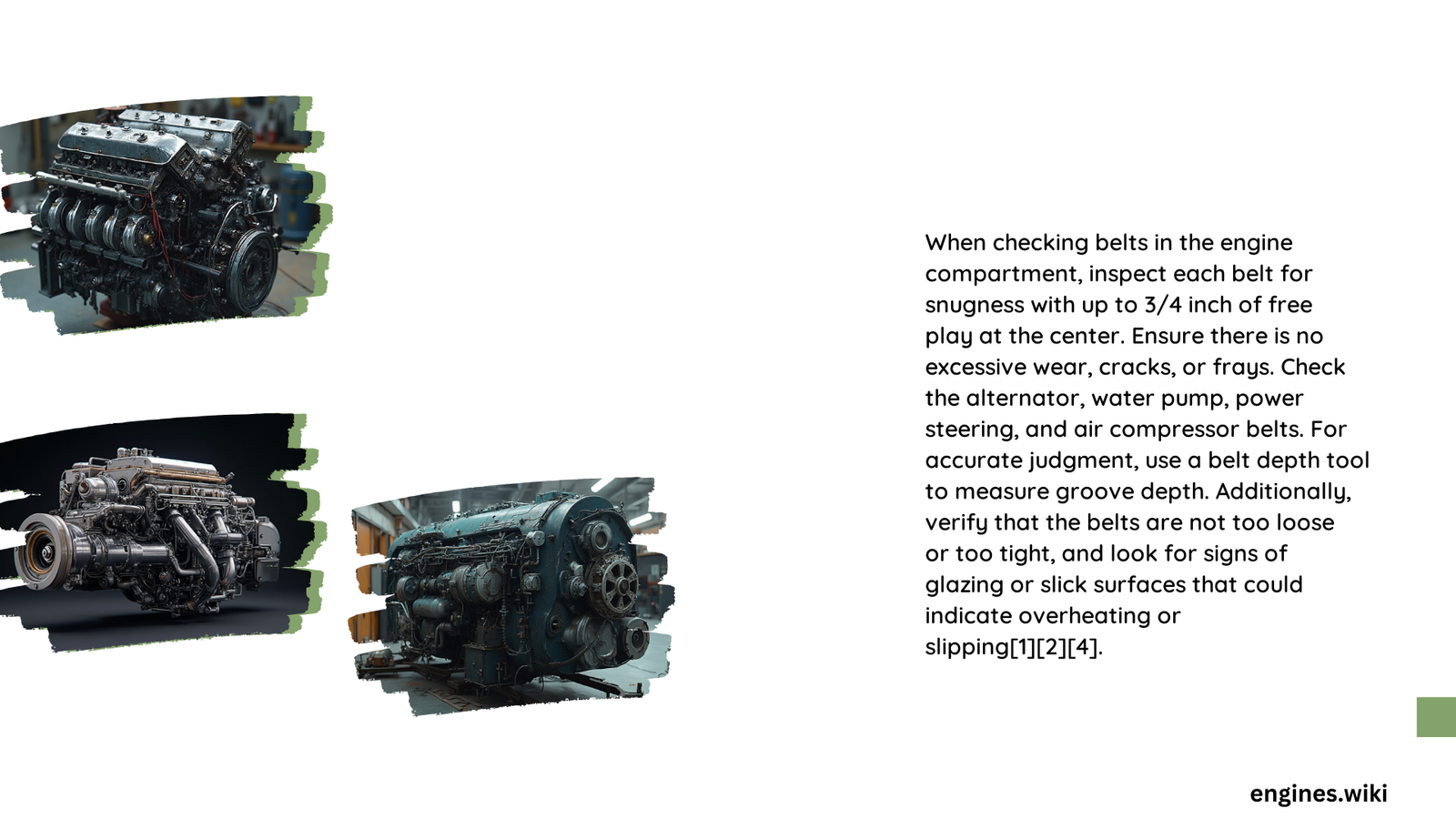Vehicle engines rely on serpentine belts as critical components that power multiple systems, including alternators, power steering, and air conditioning. Understanding when and how to check these belts can prevent unexpected breakdowns, costly repairs, and potential roadside emergencies. Regular inspection involves examining belt condition, tension, and wear patterns to ensure reliable engine performance and prevent potential mechanical failures.
What Are the Critical Signs of Belt Wear?
Serpentine belt maintenance requires a systematic approach to identifying potential issues before they escalate. Here are the key indicators to watch for during your inspection:
Visual Wear Indicators
- Visible Cracks:
- Small, widely spaced cracks are typically acceptable
- Three or more cracks within a 3-inch section indicate replacement needed
- Cracks extending from rib tips to belt body signal immediate replacement
Tension and Alignment Checks
| Inspection Point | Normal Condition | Warning Sign |
|---|---|---|
| Belt Tension | Consistent, firm pressure | Excessive slack or stretching |
| Pulley Alignment | Smooth, even contact | Visible misalignment or uneven wear |
| Rib Condition | Intact, clean ribs | Fraying, missing chunks, glazing |
How Often Should Belts Be Inspected?

Recommended Inspection Intervals
- Monthly Visual Checks: Quick under-the-hood examination
- Mileage-Based Inspection:
- Every 50,000 to 100,000 miles
- During routine maintenance services
- Before long trips or seasonal changes
What Tools Are Needed for Belt Inspection?
Essential tools for comprehensive belt examination include:
1. Compact belt tension gauge
2. Lighted inspection mirror
3. Work gloves
4. Flashlight
5. Magnifying glass (optional)
What Are the Potential Replacement Costs?
Cost considerations for serpentine belt maintenance:
– Belt Replacement: $20 – $100
– Labor Costs:
– 30 minutes to 3 hours
– $100 – $500 total replacement expense
– Additional Components:
– Tensioners: $50 – $200
– Potential related repairs
How to Perform a Comprehensive Belt Inspection?
Step-by-Step Inspection Process
- Ensure engine is cool and off
- Visually examine entire belt surface
- Check for cracks, glazing, and fraying
- Verify tension using gauge
- Rotate belt manually to check for smooth movement
- Listen for unusual squealing or chirping sounds
What Happens If Belts Are Not Maintained?
Neglecting serpentine belt maintenance can lead to:
– Complete engine system failure
– Loss of power steering
– Battery charging issues
– Overheating
– Unexpected vehicle breakdowns
Pro Tips for Belt Longevity
- Always follow manufacturer-recommended maintenance schedules
- Replace belts proactively
- Use high-quality replacement parts
- Consider professional inspection if unsure
Note: Individual vehicle requirements may vary. Always consult your specific vehicle’s manual for precise maintenance guidelines.
Reference:
– MOTOR Magazine Preventive Maintenance Guide
– AAA Car Maintenance Resource
– Gates Preventive Maintenance Manual
